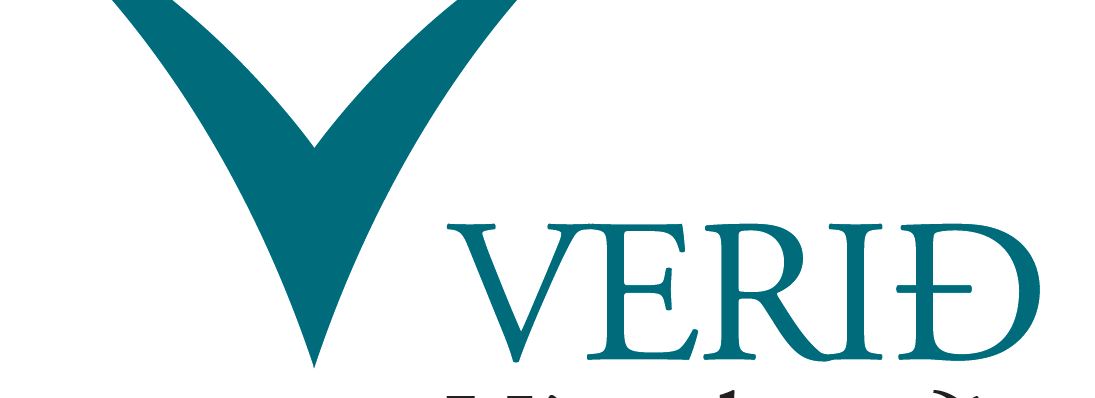On Wednesday 2 May, a doctoral dissertation in mechanical engineering will take place at the Faculty of Industrial Engineering, Mechanical Engineering and Computer Science at the University of Iceland's School of Engineering and Natural Sciences. Simulation of temperature changes during transport of fresh fish products.
See news on the web University of Iceland
Opponents are Trygve Magne Eikevik, professor of mechanical engineering, Norwegian University of Science and Technology (NTNU) in Trondheim and dr. Jean Moureh, Refrigerating Process Engineering Research Unit, IRSTEA, France.
Dr. Ólafur Pétur Pálsson, professor and president of the Faculty of Industrial Engineering, Mechanical Engineering and Computer Science, will chair the ceremony, which will take place in the Celebration Hall of the University of Iceland in the Main Building and will begin at 14:00.
Abstract from the study
Temperature control in the transport of fresh food from processing to the market has a decisive effect on the spoilage processes of the product. Fresh fish products are examples of such products. The aim of this dissertation is to analyze and improve the temperature control in the cooling chains of fresh fish products from processing to the market through experiments and mathematical heat transfer models. The results of environmental and product temperature measurements in actual air and sea transport processes are used to design transport simulator experiments, where different packaging solutions are compared in terms of insulation value and the quality of the fish products they contain. The results of the simulation experiments are used to verify the results of three-dimensional heat transfer models of fresh and / or super-chilled whitefish packed in individual boxes or stackers on pallets under heat stress.
The results indicate considerable problems in temperature control in air transport, especially in the case of passenger aircraft, but less so in container transport by ship. However, improvements are still needed in some maritime transport chains. The importance of pre-packing before packing is demonstrated to maintain the correct fish temperature during transport, especially during flight. The same applies to frozen cooling mats, which are recommended to be spread as much as possible around fish fillets or pieces in packages and thus even out their cooling effect. Measurements indicate that a temperature difference of up to 10.5 ° C can be expected within an entire pallet of fresh fillets in poorly temperature-controlled air transport. It can be assumed that this temperature difference causes the shelf life of products in the corner boxes of the pallet to be up to 1-1.5 days shorter than products in the center of the pallet.
The insulation value of expanded polystyrene (EPS) is higher than that of comparable corrugated plastic (CP) boxes. In the project, a three-dimensional model of corner-rounded foam box is developed in the ANSYS FLUENT software with the aim of improving box insulation and product quality. Analysis by model is the basis for a new 5 kg foam box, which is now manufactured by the largest manufacturer of foam boxes in Iceland. Other heat transfer models that have been developed in the project include a cooling mat on top of super-chilled cod fillets in two types of EPS boxes and cooled fillets in a CP box without a cooling mat. Furthermore, models of pallets with chilled or supercooled fish are being developed to study the effect of location on pallets, size of pallets and precooling on the development of fish temperature under thermal stress.
The doctoral dissertation is based on six scientific articles and one conference paper. Five scientific articles have already been published or approved for publication in international scientific journals.
The main supervisor was Halldór Pálsson, associate professor at the Faculty of Industrial Engineering, Mechanical Engineering and Computer Science at the University of Iceland. Other members of the doctoral committee were Sigurjón Arason, associate professor at the Faculty of Food and Nutrition at the University of Iceland and chief engineer at Matís ohf., Magnús Þór Jónsson, professor at the Faculty of Industrial Engineering, Mechanical Engineering and Computer Science, Sjöfn Sigurgísladóttir, former CEO of Matís ohf. and Viktor Popov, director of the Wessex Institute of Technology.
The research is related to the projects "Simulation of cooling processes", which were funded by the AVS Fisheries Research Fund (R 037-08), the Technology Development Fund (081304508) and the University of Iceland Research Fund and the European project "Chill on" (www.chill-on.com). Matís ohf. provided Björn's research facilities.
Starts: 02/05/2011 at 14:00
Location: Main building
Further location: Celebration hall
About the doctoral dissertation
Björn Margeirsson was born in 1979 in Blönduós. He completed a BS degree in mechanical engineering at the University of Iceland in 2003, worked at the General Engineering Office from 2003 to 2005 and completed an MS degree in mechanical engineering at Chalmers University of Technology in Gothenburg in 2007. Since graduating, he has worked at Matís ohf. as a specialist, later a project manager and now a professional manager in the Processing, Value Added and Farming divisions.
Björn Margeirsson is married to Rakel Ingólfsdóttir, a medical student, and they have a daughter, Arna, who was born in 2010.
About the doctoral candidate
Björn Margeirsson was born in 1979 in Blönduós, Iceland. He finished his BSc degree in mechanical engineering at the University of Iceland in 2003, worked at Almenna Consulting Engineers from 2003 to 2005 and earned his MSc degree in mechanical engineering at Chalmers University of Technology in Gothenburg, Sweden in 2007. From graduation he has worked at Matis ltd as a research scientist, project manager and currently as a research group leader in the Value Chain, Processing and Aquaculture division. Björn is married to Rakel Ingólfsdóttir, medical student, and their daughter, Arna, was born in 2010.
The dissertation can be accessed on Matís' website, http://www.matis.is/media/utgafa/krokur/BMPhDThesis.pdf.
Abstract
Temperature control is a critical parameter to retard quality deterioration of perishable foodstuff, such as fresh fish, during distribution from processing to consumers. This thesis is aimed at analyzing and improving the temperature management in fresh fish chill chains from processing to market by means of experiments and numerical heat transfer modeling. Ambient and product temperatures are mapped in real multi-modal distribution chains, which are both sea and air based. The results serve as a basis for simulation experiments, in which different packaging units and solutions are compared with respect to thermal insulation and product quality maintenance and more optimal ones are proposed. The experimental results are used to validate 3-D heat transfer models of fresh or superchilled whitefish, packaged in single boxes or multiple boxes assembled on a pallet, under thermal load.
Much more severe temperature control problems are measured in air transport chains, especially in passenger airplanes, compared to sea transport. However, space for improvement in sea transport chains has also been discovered. The results underline the importance of precooling whitefish products before packaging for air freight and applying well distributed cooling packs inside the packaging. The results imply that product temperature differences of up to 10.5 ° C can occur in a non-superchilled fresh fish pallet load and the storage life difference between the most and the least sensitive boxes on a full size pallet in a real air transport chain can exceed 1–1.5 days. It is demonstrated that even though a widely used expanded polystyrene (EPS) box design with sharp corners offers better thermal insulation than a corrugated plastic (CP) box, the sharp-corner design can be significantly improved. Such design improvement has been accomplished by developing a numerical heat transfer model in ANSYS FLUENT resulting in a new 5-kg EPS box currently manufactured by the largest EPS box manufacturer in Iceland. Other temperature-predictive models of products, developed and validated in this thesis, consider a cooling pack on top of superchilled cod packaged in two types of EPS boxes, compared to fresh fish packaged in a CP box without a cooling pack. Finally, models are developed for pallet loads of different sizes containing either chilled or superchilled fish. The models are used to confirm the temperature-maintaining effect of precooling and estimate the effect of pallet stack size.











